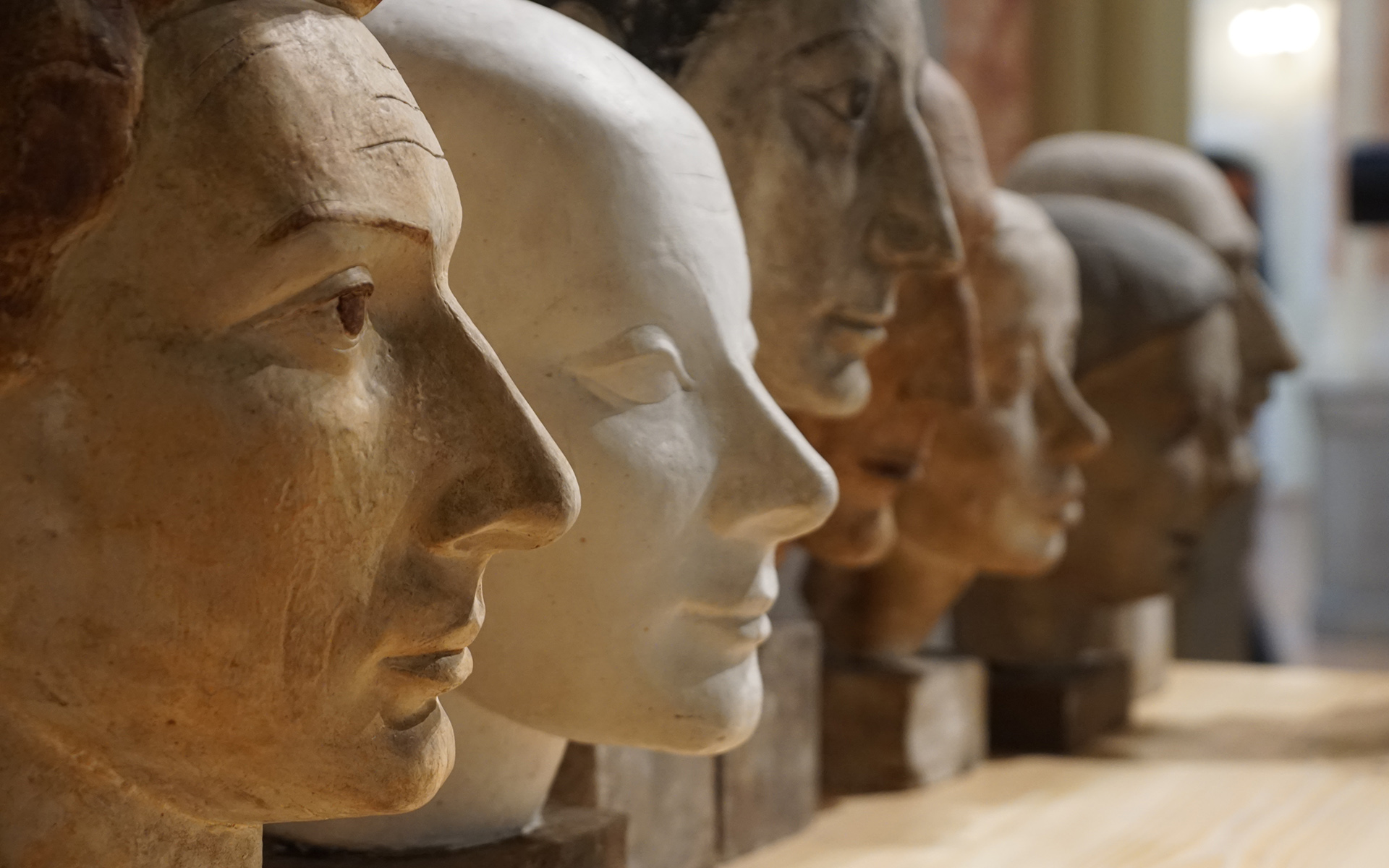
Feel free to add tags, names, dates or anything you are looking for


The depository for Rusudan Gachechiladze’s (რუსუდან გაჩეჩილაძე) sculptures is located right in the yard of her house, in a small-size shed of the so-called “Italian yard”. Dusted shelves provoke associations of art-house movie-frames. It seems to be a specially designed installation that stores the facts of historical archives.
This refers to a biography that deals with the most complicated periods and unfavorable conditions for an artist's career. Rusudan Gachechiladze hosted her first solo exhibition in 2019 (IART Gallery) at the age of 82 and this does not mean that she was an artist unknown to the Georgian society before. She was very well-introduced to the art circles, lecturing at Tbilisi State Academy of Arts and creating very popular sculptural portraits.
However, most of Rusudan Gachechiladze's works are in tinted gypsum versions and have not been transferred to other scales and materials. It would be desirable for any part of the public space to demonstrate her art and for this art to participate in the daily routine of citizens.
Rusudan Gachechiladze has been creating graphic works lately, but she assembles even this graphic by a sculpture principle, with constructive approach, depicts the relationship of a form with space using general and powerful lines. Topics are generalized as well and demonstrate human existence and relationships through plasticity of bodies. Influence of Paul Klees’s artistic vision is evident while making her attempts to convey transcendence by means of the line and tonality.
The series of gypsum portraits vividly show the influences of important moments in the history of fine art, be it portraits of the Middle Egyptian period with inlaid eyes, realistic busts of the Roman period of the Republic, or expressive Fayium iconography.
_copy.jpg)
Gypsum portraits by Rusudan Gachechiladze. Photo: Tamar Sarajishvili.
Series of portraits demonstrate famous representatives of Georgian culture - Otar Chiladze, Yuza Khuskivadze, Tata Ebralidze, Levan Kharanauli, Mamuka Tsutskiridze, Alde Kakabadze, Nugzar Andguladze, Muraz Japaridze, etc., as expressive and impressive characters and their simultaneous perception at the depository shelves makes any visitor feel in an environment where he/she is surrounded by a strong presence of each individual.
_copy.jpg)
Portrait of Rezo Ebralidze by Rusudan Gachechiladze. 1985. 29X25 cm. Gypsum (Bronze original is lost).
This was the very reason for curator’ decision-making for the 2019 exhibition- Form and Space (Curators: Khatuna Khabuliani, Elichka Nadareishvili), when the imitation of Rusudan Gachechiladze’s depository: a series of portraits arranged in two rows - was presented as an installation, separate from the main exposition, in the large exhibition hall of the National parliamentary library of Georgia.
_copy.jpg)
Rusudan Gachechiladze’s Studio.Installation. Form and Space Exhibition. National parliamentary library of Georgia. 2019. Photo: Tamar Sarajishvili
These portraits, in addition to the accuracy of external resemblance to the models, are characterized by extraordinary depth and a sense of personal significance. And characteristic external features are underlined by remarkable sensitivity. Rusudan Gachechiladze- the sculptor- can present a portrait in a manner, regardless the fact that he/she is a famous writer or a poet, that a viewer is caught by a desire to explore more about a model, to get betteracquainted with a model’s personal adventure, in short, to communicate with the character.
Rusudan Gachechiladze’s art has been developed in contradictions caused by ideological regime, when there have been stereotyped formulas prescribed for sculptors.
Her works reveal frivolous responses to such stereotyped formulas too. The fencer. Bronze (Original is lost, gypsum copy is preserved), was supposed to be a part of the cult of health and youth, characteristic of Soviet ideology and to become a part of propaganda. However, the sculpture is emphatically plastic and focused on exploring the body; the sculptor is interested in concentration on capabilities of a body, characteristic to athletes, their aspiration to the universal, to the ideal. One can easily recognize presentation of individual dignity, characteristic to Revival epoch plastic, deep romanticism, considering classical “contrapposto”.
The same can be said about such a sample of minor plastic like “Alazani valley”. The composition responds to the specifics of socialist realism by the context, but its conceptualization is absolutely free by very explicit reconciliation of the character of archaic sculpture and cubist elements.
_copy.jpg)
Gypsum portraits by Rusudan Gachechiladze. Photo: Tamar Sarajishvili
Rusudan Gachechiladze is an artist, whose works start to immediately affect visitors and provide an environment for them to think on a language of a sculpture, the capabilities of this medium and a free choice of an artist, regardless contexts.